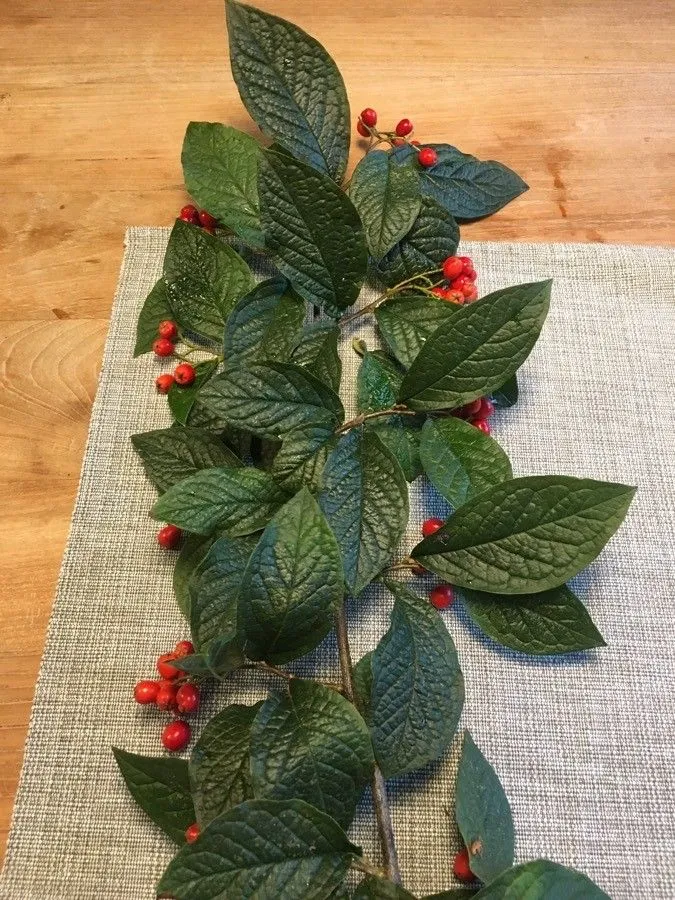
Author: Bois
Bibliography: Bull. Soc. Bot. France 51(Sess. Jub. 2): cliii (1904)
Year: 1904
Status: accepted
Rank: species
Genus: Cotoneaster
Vegetable: False
Observations: SE. Tibet to SC. China
Hollyberry cotoneaster, scientifically known as Cotoneaster bullatus, is a distinctive plant species belonging to the Rosaceae family. First described in 1904 by Bois in the publication “Bulletin de la Société Botanique de France,” this plant has a storied history and a significant presence in its native regions.
Native to the regions stretching from southeastern Tibet to south-central China, Hollyberry cotoneaster is well adapted to the temperate climates found in these areas. The plant thrives in mountainous regions where it is an integral part of the local biodiversity. The geographical spread of this species highlights its varied adaptability and resilience in different environmental conditions.
The Hollyberry cotoneaster is known for its striking appearance and horticultural appeal. The leaves of this plant are textured with a bumpy surface, giving them a distinct look that stands out among other foliage. In autumn, the leaves often turn a remarkable shade of red or purple, adding to its visual appeal and making it a favored choice for ornamental planting.
The plant produces small, white flowers typically blooming in spring and early summer, which are then followed by bright red berries in the fall. These berries are not only visually appealing but also attract a variety of bird species, thus playing a role in local ecosystems by supporting wildlife.
Due to its aesthetic qualities and hardiness, Hollyberry cotoneaster is also utilized in garden landscapes around the world. It is often employed as a decorative shrub or used in hedges and borders due to its dense growth habit and attractive seasonal changes. However, it is important to manage this plant properly as it can become invasive in some areas if not contained.
In summary, the Hollyberry cotoneaster (Cotoneaster bullatus) is a versatile and attractive member of the Rosaceae family. Its origins in Southeast Tibet and South-Central China, coupled with its notable botanical features, underline its importance both in natural habitats and cultivated landscapes.
Dan: buklet dværgmispel, bulet dværgmispel
Eng: bullate cotoneaster, hollyberry cotoneaster
Fra: cotonéaster, cotonéaster gaufré
Deu: runzel-zwergmispel, runzelblatt-zwergmispel, sparrige steinmispel, runzelige zwergmispel
Nob: bulkemispel
Nno: bulkemispel
Swe: rynkoxbär
Cym: cotoneaster deilgrych
Nld: rimpelige cotoneaster
En: Hollyberry cotoneaster, Bullate Cotoneaster
Zh: Pao ye xun zi, 泡叶栒子, 泡葉栒子
Cs: Skalník puchýřnatý
Da: Bulet Dværgmispel, Buklet dværgmispel
Nl: Rimpelige cotoneaster
Fi: Kurttutuhkapensas
Fr: Cotonéaster, Cotonéaster gaufré
De: Runzelige Zwergmispel, Blasige Steinmispel, Großblättrige Strauchmispel, Großblättrige Zwergmispel, Runzel-Zwergmispel (Runzelzwergmispel), Runzelblättrige Strauchmispel, Runzlige Steinmispel, Runzlige Strauchmispel, Runzel-Zwergmispel, Runzelblatt-Zwergmispel, Sparrige Steinmispel, Amselbrotbaum, Reichblühende Runzel-Zwergmispel
Nb: Bulkemispel
Nn: Bulkemispel
Pl: Irga pomarszczona
Es: Grbančastolistna panešplja
Sv: Rynkoxbär
Zh-tw: 泡葉栒子
Cy: Cotoneaster Deilgrych
Taken Jun 21, 2020 by Hedwig Bouley (cc-by-sa)
Taken Jun 21, 2020 by Mikael Boström (cc-by-sa)
Taken Jun 14, 2020 by Wiebke Logemann (cc-by-sa)
Taken Jun 29, 2022 by Jim Ridley (cc-by-sa)
Taken Sep 9, 2020 by Darren Giddins (cc-by-sa)
Taken Sep 25, 2021 by Linke Sebastian (cc-by-sa)
Taken Oct 19, 2021 by charlotte Rose (cc-by-sa)
Taken Sep 27, 2020 by tony forbes (cc-by-sa)
Taken Sep 3, 2021 by barbara babi (cc-by-sa)
Taken Sep 20, 2020 by Frozy
Taken Oct 19, 2021 by charlotte Rose (cc-by-sa)
Taken Oct 10, 2021 by Tineke Ruiter (cc-by-sa)
Taken Oct 4, 2020 by bob bob petra (cc-by-sa)
Taken Feb 16, 2021 by Tom Fisher (cc-by-sa)
Taken Sep 20, 2020 by Frozy
Taken Mar 27, 2020 by Sabina Hartmann (cc-by-sa)
Taken Oct 6, 2020 by Mika van Walsem (cc-by-sa)
Taken Sep 25, 2022 by Morgan Moss (cc-by-sa)
Taken Aug 5, 2019 by Sabina Hartmann (cc-by-sa)
Taken Sep 20, 2020 by Frozy
Taken Apr 23, 2021 by aleks james (cc-by-sa)
Taken Aug 30, 2022 by Ann De Blick (cc-by-sa)
Taken Apr 21, 2021 by Sabina Hartmann (cc-by-sa)
Taken Nov 8, 2020 by Mikael Boström (cc-by-sa)
Taken Mar 27, 2020 by Sabina Hartmann (cc-by-sa)
Taken Sep 4, 2020 by Mikael Boström (cc-by-sa)
Taken Jun 11, 2021 by AnnA (cc-by-sa)
Taken Apr 23, 2020 by Luisa (cc-by-sa)
Taken Oct 4, 2020 by bob bob petra (cc-by-sa)
© copyright of the Board of Trustees of the Royal Botanic Gardens, Kew.
© copyright of the Board of Trustees of the Royal Botanic Gardens, Kew.
© copyright of the Board of Trustees of the Royal Botanic Gardens, Kew.
Growth habit: Shrub
Family: Myrtaceae Author: (F.Muell.) K.D.Hill & L.A.S.Johnson Bibliography: Telopea 6: 402 (1995) Year: 1995 Status:…
Family: Rubiaceae Author: Pierre ex A.Froehner Bibliography: Notizbl. Bot. Gart. Berlin-Dahlem 1: 237 (1897) Year:…
Family: Sapindaceae Author: Koidz. Bibliography: J. Coll. Sci. Imp. Univ. Tokyo 32(1): 38 (1911) Year:…
Family: Asteraceae Author: A.Gray Bibliography: Pacif. Railr. Rep.: 107 (1857) Year: 1857 Status: accepted Rank:…
Family: Fabaceae Author: Medik. Bibliography: Vorles. Churpfälz. Phys.-Ökon. Ges. 2: 398 (1787) Year: 1787 Status:…
Family: Aspleniaceae Author: (Cav.) Alston Bibliography: Bull. Misc. Inform. Kew 1932: 309 (1932) Year: 1932…